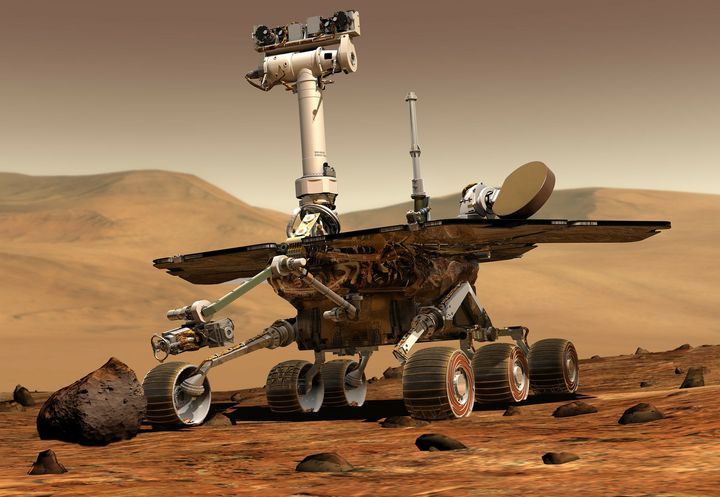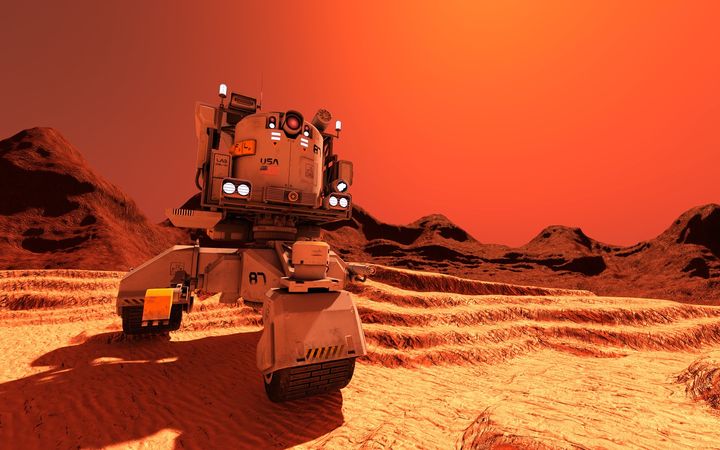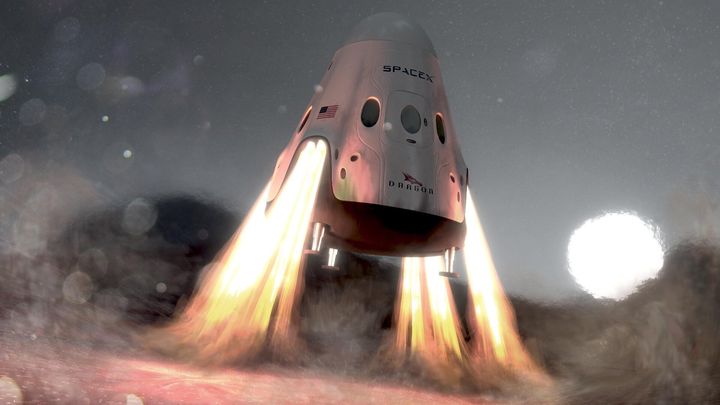The expedition to Mars has repeatedly captured the attention of mankind, since the time of the space race in the 1960s. Now this is no longer a fantasy, but a matter of time and resources. In 2020, the missions of several organizations will start, which continue to prepare for the development of a new planet and bring closer the realization of the main goal - the colonization of Mars.
NASA Mars 2020 Mission
The Mars 2020 project (Mars 2020 rover mission) is part of NASA's long-term study of the Red Planet. The main objective of the project is the reconnaissance mission of the planet’s surface, which will answer many fundamental questions. For example, whether there was life on Mars, whether traces of inhabited conditions in the past, or signs of the existence of bacteria and other microorganisms, remained on its surface.
In addition, the tasks of Mars 2020 include collecting information and testing technologies that will be used by the colonialists in the future. The program will test the production of oxygen from the local atmosphere, search for minerals and resources (for example, groundwater), regulate planting processes, determine the weather, dust concentration, etc.

The Mars 2020 project is a rover that will be sent from Earth in July / August 2020 (as reported on the project’s official website). The rover will move on the surface in an unusual way: using the built-in helicopter blades. Thus, he will “jump”, as it were, going up, spilling a certain distance and landing on the ground. However, a helicopter can fly only 3-4 times a day, since the rover is equipped with a small solar battery. This decision was made to maintain the minimum weight of the device. Otherwise, he could not fly in conditions of local air density.
The expedition on the surface of the planet will last at least one Martian year (687 days). During this period, the necessary information will be collected, including soil samples, which are subsequently planned to be forwarded to Earth for further study in a specialized laboratory.

ExoMars
Another program to study the Red Planet is EXOMARS 2016-2020. It is developed and controlled by the European Space Agency and the Russian state organization Roscosmos. The program has two missions:
- Launch of the Trace Gas Orbiter (TGO) in 2016.
- Flight to Mars rover in 2020.
The ExoMars program is aimed at surface exploration and the demonstration of new technologies that will be used by a future expedition. Her tasks include:
- entry into the atmosphere, descent and landing of the payload;
- mobility testing on the surface of Mars;
- access to the bowels and obtaining samples.
Interesting: One of the priority goals of ExoMars is to participate in an international mission to return samples back to Earth.
The TGO orbiter was sent back in 2016. He successfully arrived in the orbit of Mars and is now already performing the required research. The tasks of TGO include the study of atmospheric components: in particular, methane and other gases, water vapor. In addition, it will work as a relay satellite to communicate with the rover, which will be launched in 2020.

Equipment for collecting soil and other samples of the planet was installed on the rover. His tasks include the study of exobiology and geochemistry. Roscosmos provides a Proton launcher for both missions.
Spacex
The “human” expedition to Mars in 2024 is planned by Elon Musk. At the moment, the construction of a spaceship and a rocket is being carried out, which will deliver the ship to orbit. This task will be assigned to the Falcon 9 rocket. It is a two-stage launch vehicle, which is designed for reusable use.
The ability to return the first stage back and use it again significantly reduced the cost of space flights. For example, launching a Falcon Heavy cost SpaceX about $ 90 million, and launching a similar rocket from ULA (Boeing) would cost at least $ 400 million. If scientists succeed in returning the second stage, then this will save even more money for the development of space.
In May 2018, Elon Musk presented the design of the manned spacecraft Crew Dragon, which will deliver people to Mars. At the beginning, it will undergo test flights, including payload transportation to the ISS. And in the future it will be tested by pilots who will also go to the ISS.

Inspiration Mars Foundation
The non-profit organization Inspiration Mars Foundation (Foundation), founded by Dennis Tito in 2013, announced its intention to organize a flight to Mars in 2018. The company planned to take advantage of a special orbital period in January 2018, which allows you to get to the orbit of Mars with minimal fuel consumption. An additional window is planned for 2021 if the mission cannot be implemented in 2018.
The offer was based on the trajectory of free return. The manned ship was supposed to enter the orbit of Mars through the orbit of Venus and the Earth, and return back to Earth in 501 days. This campaign has been heavily criticized by state and independent organizations.
At the moment, there is no current information on the activities of the fund, as their official website is blocked.

Mars one
Mars One is a private project of the Dutch organization Mars One and Interplanetary Media Group led by Bas Lansdorp. The program involves a one-way expedition to Mars. The company positions itself as a non-profit organization. However, she offers a way to earn income from expedition in the form of filming and further selling documentaries about the preparation and implementation of the mission.
The implementation of the project involves phased implementation. In 2020, the first landing module will be launched on the planet’s surface to collect information for the expedition. Until 2026, residential modules will be built on Mars using robotics, equipment and other useful cargoes will be transported. The flight of the first ship with people is scheduled for 2026. The following ships with people will be sent in 2028 and 2029. Until 2035, the organization expects to build a colony for 20 people.
However, Mars One has been repeatedly criticized and accused of misconduct in order to obtain material benefits. In the Russian documentary film "Finding Mars" its leaders were bluntly called scammers.
Elon Musk dreams of colonizing Mars: video
Read also:




















